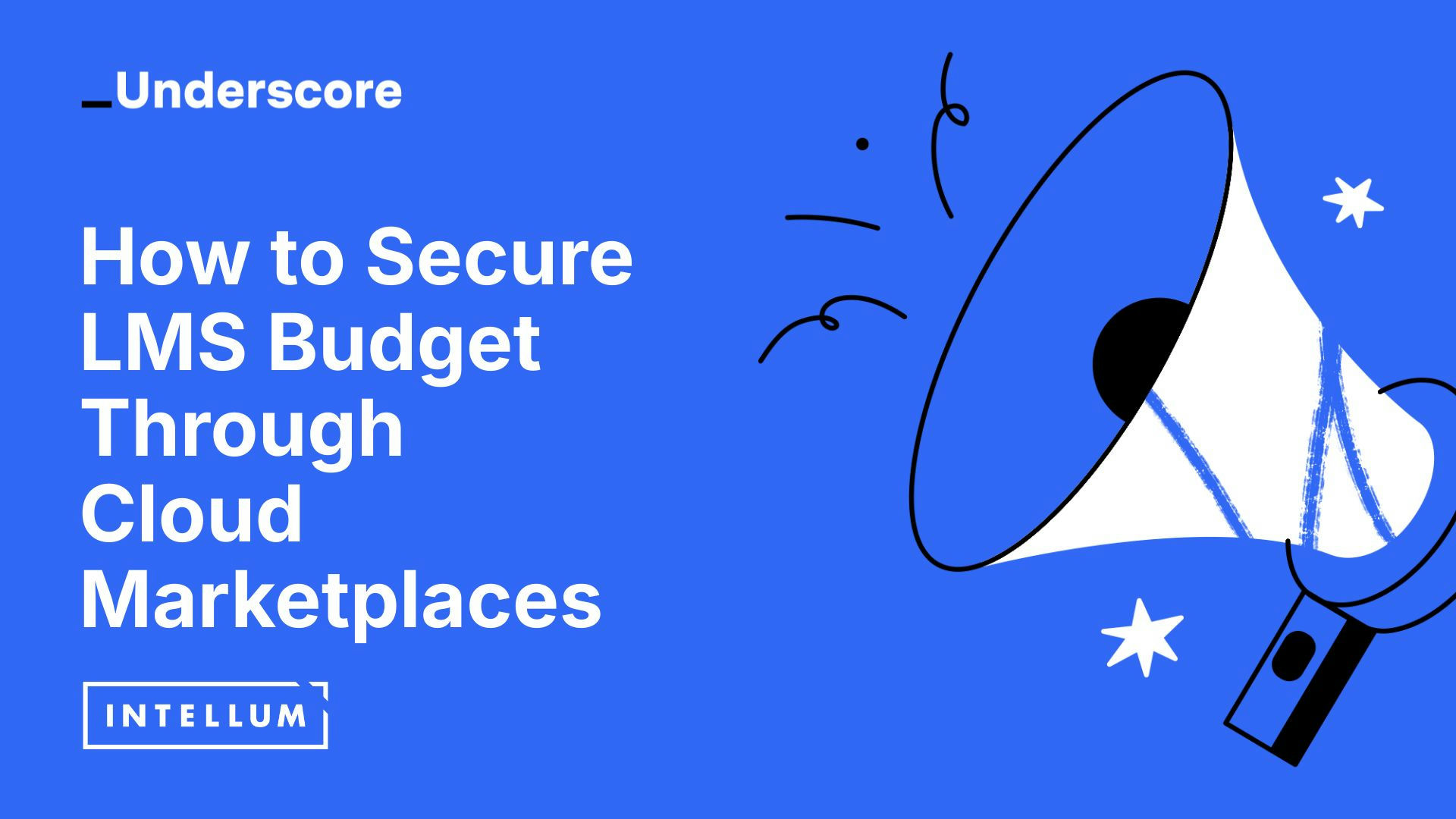Trying to buy a new LMS, but not sure about the budget? Good news: You may already have funding available in your company’s cloud marketplace account.
Many organizations that use cloud providers like Google Cloud, AWS, or Microsoft Azure have committed cloud spend—prepaid funds that can be used to purchase approved software and services. If your company already buys cloud services, you could use that spend to fund Intellum without touching your department’s direct budget.
What Is a Cloud Marketplace?
Think of a cloud marketplace as an app store for enterprise software. Companies can discover, purchase, and manage software and services—everything from LMS platforms to security tools—within the same system they already use to manage their cloud commitments.
When your organization commits to spending a certain amount with a cloud provider over several years, that spend often becomes a “bucket” of prepaid credit. Instead of paying separately for software, teams can draw from that pool, often outside of their own departmental budgets.
How to Find Out If You Have Marketplace Spend
The key is knowing whether your organization participates in a cloud commitment program. To find out:
1. Ask Procurement or Finance.
Ask if your organization has a “committed cloud spend” or “enterprise agreement” with Google, AWS, or Azure.
2. Loop in IT or Spend Operations.
These teams manage cloud contracts and can confirm how funds are being used.
Remember: Procurement isn’t a blocker; they’re your ally. Their job is to simplify purchasing and help you spend existing funds efficiently. If you can align your goals with theirs, the case becomes easier to make.
Why Education and LMS Teams Should Care
For most education teams, budget is tight. But with marketplace spend, you can fund your learning management system (LMS), related tools, or even professional services through existing cloud commitments—without touching your team’s direct budget.
And this approach isn’t just a win for you. It’s also benefits procurement and IT through:
- Simplified purchasing: One vendor (e.g., Google) handles billing and invoicing.
- Streamlined compliance: Vendors listed on the marketplace are pre-vetted for security and compliance.
- Faster renewals: Offers can be approved and processed in days rather than weeks.
How to Build the Business Case For an LMS
To secure marketplace funds for your LMS or education initiative:
- Clarify your program’s ROI. Show how education contributes to customer satisfaction, adoption, and retention, even if it’s a “loss leader.”
- Right-size your needs. Use usage data to forecast the appropriate license level and avoid overspending.
- Align with company goals. Frame education as a driver for product adoption, revenue growth, or customer retention.
- Engage early and often. Involve finance, IT, and procurement from the start. The earlier they understand your goals, the faster you can access funds.
How the Purchase Process Works
Purchasing through a marketplace is remarkably simple:
- Provide your cloud billing ID and authorized signatory email to your vendor (e.g., Intellum).
- The vendor uploads a private offer in the cloud marketplace.
- Your signatory approves the offer—and you’re done.
Start with Strategy, Then Spend
Some advice from Bryan Rebhahn, Enterprise Application Portfolio Manager at Optimizely: Before you chase marketplace dollars, make sure your education strategy is solid.
Decide:
- Will your program be a free value-add (a “loss leader”) or a revenue-generating offering?
- How does it align with your company’s growth goals?
Once you have clarity, you can confidently make the case and use marketplace funds to make it happen.




.png)

